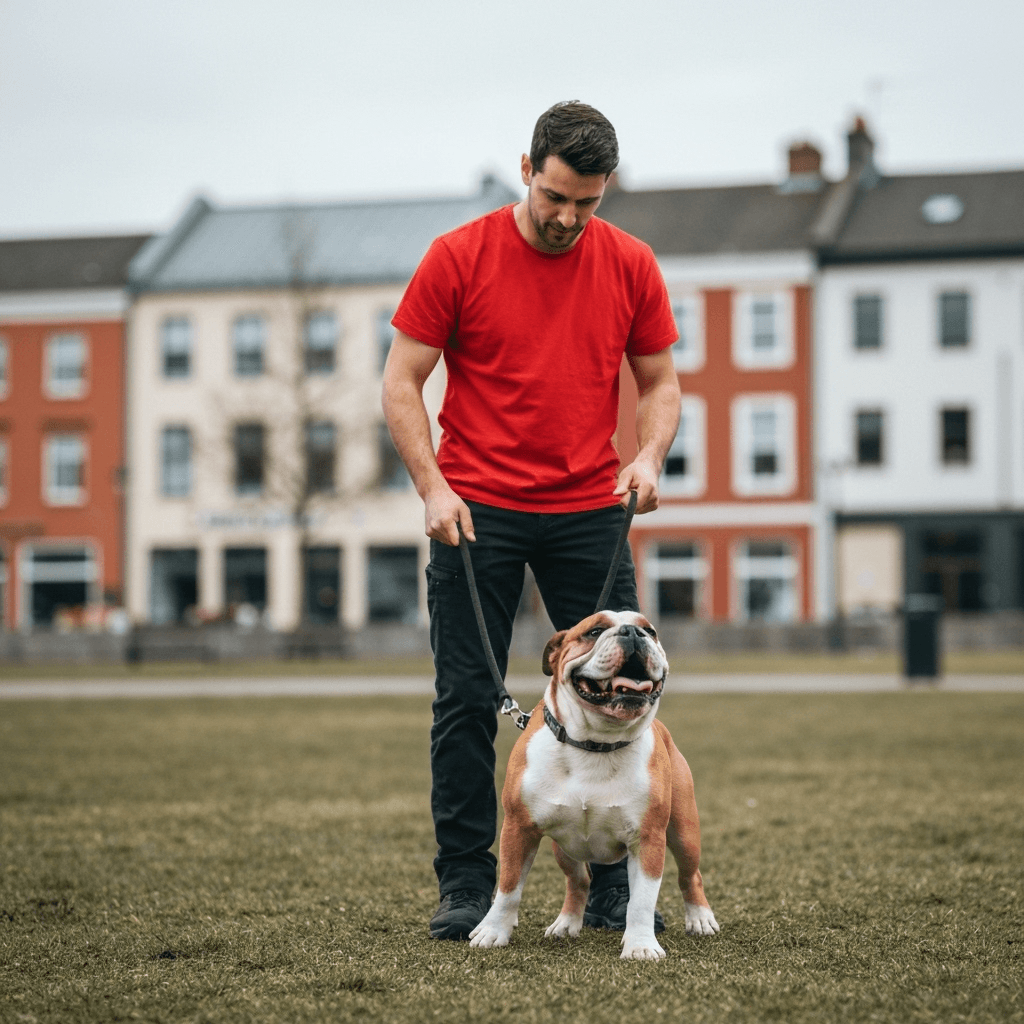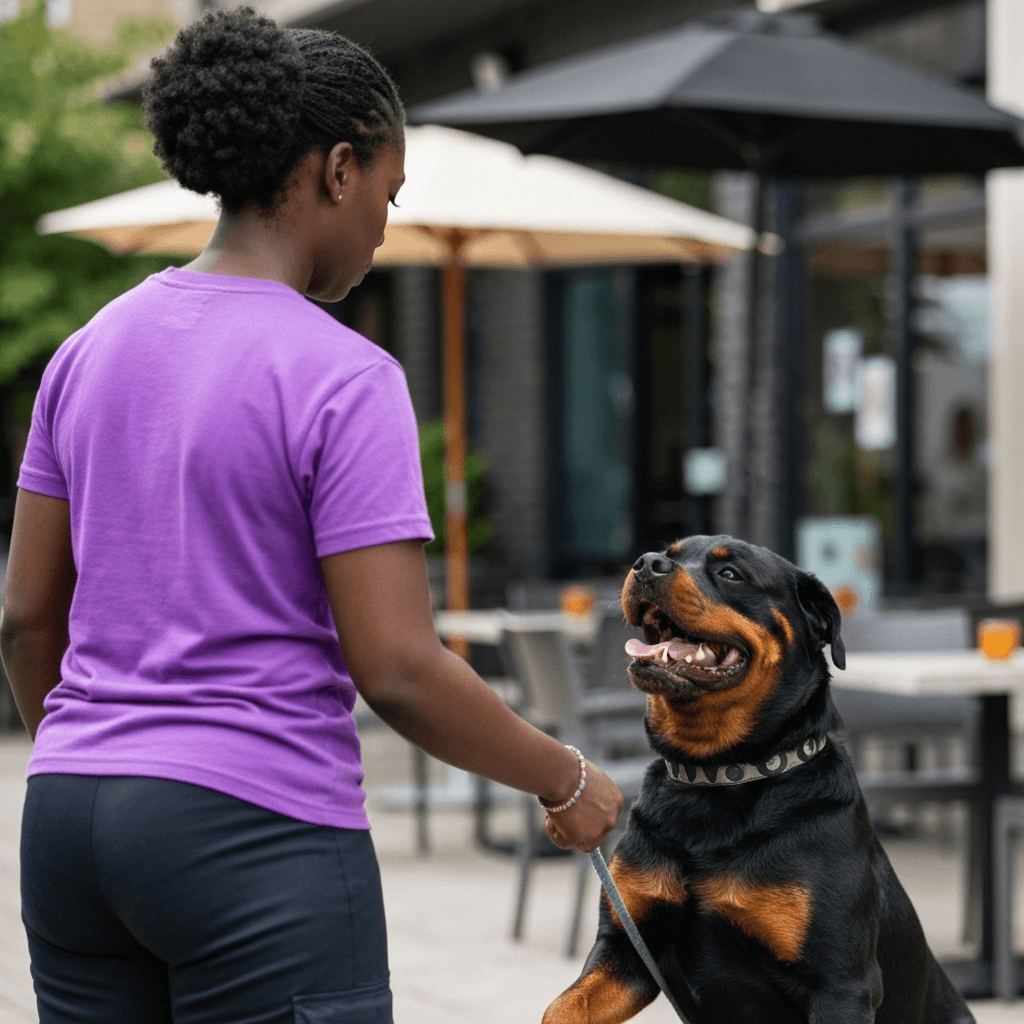Your Complete Guide to Choosing a Dog Trainer in Manhattan
Living with a dog in New York City means navigating crowded sidewalks, packed elevators, and busy parks every day. Your dog needs to handle real city life, from staying calm on leash walks through Times Square to behaving politely while you wait in line at that trendy Chelsea coffee shop.
Good training also covers the basics of subway travel, greeting your doorman without jumping, and settling quietly under outdoor tables whether you’re dining in the Financial District or grabbing lunch near a Harlem playground. The right trainer understands these unique challenges and helps you tackle them one by one.
How to Choose the Right Trainer
Start by looking for trainers who use positive reinforcement methods that are both clear and kind. These approaches keep dogs engaged and focused, which is exactly what you need when crossing busy intersections or navigating tight spaces.
Professional credentials give you a way to compare different trainers’ backgrounds and experience. You’ll want to understand dog trainer certifications and look for specific credentials like KPA-CTP or CPDT-KA. If your dog has behavior challenges, ask about IAABC-CDBC for general issues or CBCC-KA for aggression concerns. Science-based programs like CTC also show a commitment to ongoing education, and some trainers pursue hands-on credentials like CPDT-KSA.
In-home training works especially well for city dogs because you can practice door manners, elevator behavior, and neighborhood walking right where these situations actually happen. Group classes help with socialization and focus around other dogs, preparing your pup for those crowded moments at Hudson River Park or Washington Square.
Common Dog Training Methods Explained

Basic obedience covers the foundation skills every city dog needs: sit, down, stay, place, recall, and loose-leash walking. These basics help your dog handle everything from crowded street corners to polite greetings with neighbors in your building lobby.
Puppy training focuses on the essentials for young dogs: socialization with city sights and sounds, potty training for apartment life, crate comfort, bite inhibition, and leash training using short, successful sessions. These programs work well for the faster pace of city living.
Behavior modification addresses more complex issues like reactivity toward other dogs, fear of city noises, separation anxiety, or resource guarding. These cases require careful, gradual work using desensitization and counterconditioning techniques. Sometimes your trainer will want to coordinate with your veterinarian for the best results.
You might choose private lessons for personalized attention, day training where the trainer works with your dog during the day, or a structured training program with multiple sessions. For board and train programs, make sure the facility has proper permits to operate in NYC.
Some dogs need specialized training for service dog work or therapy goals, which requires extensive practice in public spaces, including transit systems and various buildings around the city.
Average Cost of Dog Training in Manhattan (Updated for 2025)
Training costs vary based on the trainer’s experience, session length, and whether they need to travel to you or navigate building access requirements. Manhattan generally costs more than the outer boroughs.
| Service Type | Manhattan | Outer NYC Boroughs |
|---|---|---|
| Puppy classes (4–6 weeks) | $300–$500 total | $200–$400 total |
| Group obedience classes (4–6 weeks) | $300–$550 total | $220–$450 total |
| Private lessons (60–90 min) | $175–$300 per session | $140–$250 per session |
| In-home coaching packages (4–6 visits) | $800–$1,500 total | $600–$1,200 total |
| Day training (trainer works your dog + handoff) | $900–$1,800 per week | $700–$1,400 per week |
| Behavior consult (initial) | $200–$350 | $175–$300 |
| Board and train (2–4 weeks) | $3,500–$7,000 total | $2,800–$6,000 total |
Keep in mind that travel fees, time spent checking in with building staff, and weekend sessions usually cost extra. Behavior cases and homes with multiple dogs typically fall on the higher end of these ranges.
Questions to Ask a Potential Dog Trainer
- What training methods do you use, and how do you keep sessions positive and low-stress?
- What credentials do you hold, like KPA-CTP or CPDT-KA, and do you keep up with continuing education?
- How will you help my dog handle elevators, building lobbies, and busy street corners in my neighborhood?
- Do you offer in-home sessions, group classes, day training, or virtual support, and what would work best for my goals?
- How will we measure progress and make sure skills work in subways, parks, and around building staff?
- What’s included in your pricing, and are there additional fees for travel or weekend sessions?
- Do you carry liability insurance, and can you provide proof?
- If you offer board and train, is your facility properly permitted and insured in NYC?
- Do you offer a consultation or evaluation before we commit to a training package?
Local New York City Rules and Considerations
Manhattan follows citywide regulations set by the NYC Department of Health and NYC Parks. Working with a trainer who knows these rules helps ensure your dog succeeds in public spaces without any legal issues.
Dogs must be on leash in public areas, with leashes no longer than 6 feet, except inside designated dog runs and during posted off-leash hours in certain parks. The NYC Parks Dogs page explains dog-run etiquette, posted rules, and off-leash hours, which are typically before 9 a.m. and after 9 p.m. where permitted.
All dogs need current licenses and rabies vaccinations. You can apply online and review all owner responsibilities through the city’s Dog Licenses page.
New York State requires rabies vaccination for all dogs, and you can find complete information at the NYS Department of Health Rabies page.
The city’s “pooper scooper” law requires you to clean up after your dog immediately and dispose of waste properly. Always carry cleanup bags with you.
Excessive barking can result in noise complaints, especially at night. Continuous barking may be considered a nuisance, so include training for calm alone time and mental enrichment in your plan.
For commercial activities in parks, trainers may need permits and proof of insurance for classes or events. Ask your trainer to confirm they’re following all requirements before scheduling group sessions in public spaces.
While there’s no specific license required to be a “dog trainer” in the city or state, businesses must follow standard regulations. Any trainer offering boarding or daycare services in NYC needs proper permits for an animal boarding establishment and appropriate insurance coverage.
On subways and buses, dogs must travel in carriers. Practice carrier training and “settle” commands if you plan to take public transit to reach training classes.
Local Manhattan Resources for Dog Owners
- Tompkins Square Dog Run in the East Village offers separate areas and plenty of space to practice recall training.
- Carl Schurz Park Dog Runs on the Upper East Side provide quieter spaces during off-peak hours for focused training.
- Madison Square Park Dog Run in the Flatiron District works well for short sessions with mild distractions.
- Riverside Park has multiple dog runs along the Upper West Side with various fenced options.
- Central Park’s posted off-leash hours give you chances for early-morning practice with attention and recall skills.

Common Questions
How much does in-home dog training cost?
Most Manhattan trainers charge $175–$300 per session, with package deals offering better value. Behavior modification work typically costs more due to the specialized expertise required.
Is in-home dog training worth it?
Absolutely, because you’re solving problems exactly where they happen. Your trainer can work on door manners, elevator reactions, street-level leash skills, and lobby greetings right in your actual building and neighborhood.
Can you pay someone to house train your dog?
Many trainers offer puppy packages that include potty training, crate routines, and scheduling guidance. Day training programs can help when your schedule is packed, with handoff sessions so you can maintain the progress.
What is the 3-3-3 rule for dog training?
This guideline suggests dogs need roughly 3 days to decompress in a new situation, 3 weeks to learn new routines, and 3 months to feel truly settled. Good training plans account for this timeline, especially with rescue dogs.
How long will it take to reach my training goals?
Most friendly dogs show solid progress within 4–8 weeks with consistent daily practice. Dogs with reactivity, fear, or aggression issues typically need several months of structured behavior modification work.
What should I bring to group classes?
Pack a flat collar or harness, a 6-foot leash, high-value treats, water, and vaccination records if requested. Leave retractable leashes at home since they don’t give you good control in group settings.
What’s the leash law in New York?
Dogs must be leashed in public on leashes no longer than 6 feet, except inside fenced dog runs and during posted off-leash hours in designated parks. Always check and follow the posted signs in each area.
Do I need a dog license in New York?
Yes, NYC requires all dogs to have current licenses and rabies vaccinations, including dogs that use dog runs. New York County follows these same citywide requirements.
What shots does my dog need in New York?
Rabies vaccination is required statewide. Your veterinarian may also recommend distemper-parvo combination vaccines and bordetella based on your dog’s lifestyle and use of group spaces like dog runs.
Are dog trainers required to be licensed in New York?
There’s no special license required specifically for dog trainers. However, if a trainer boards dogs or operates daycare services, their NYC facility must have proper permits and insurance, and the business must follow all applicable city and state regulations.
Where can I practice off-leash recall?
Use fenced dog runs like Tompkins Square, Carl Schurz, or Madison Square Park. Visit during quieter times to keep training sessions calm and set your dog up for success.
Which dog parks allow training in New York?
Most dog runs allow basic training as long as you’re respectful, keep sessions brief, and don’t disrupt other users. For structured classes or commercial activities, trainers need to confirm they have proper park permits and insurance.
What beaches and trails allow dogs for training?
Many NYC beaches restrict dogs during swimming season but allow leashed dogs during off-season months. You can practice leashed training on trails and greenways like the Hudson River Greenway and East River Esplanade year-round.
Can my dog ride the subway to class?
Yes, but dogs must travel in carriers on subways and buses. Practice carrier comfort and calm settling skills before attempting your first public transit trip to class.
Do I need proof of vaccines to use dog runs?
City regulations require current licenses and rabies vaccination, and many runs post reminders to display current tags. It’s smart to keep digital copies of vaccination records on your phone just in case.
The key to success with your city dog comes down to realistic goals, humane training methods, and consistent practice in the real environments where you live and walk every day. When you’re interviewing trainers, ask how their background and credentials, whether that’s CPDT-KA, KPA-CTP, or other certifications, prepare them to help you navigate the unique challenges of dog ownership in New York’s busy urban environment.